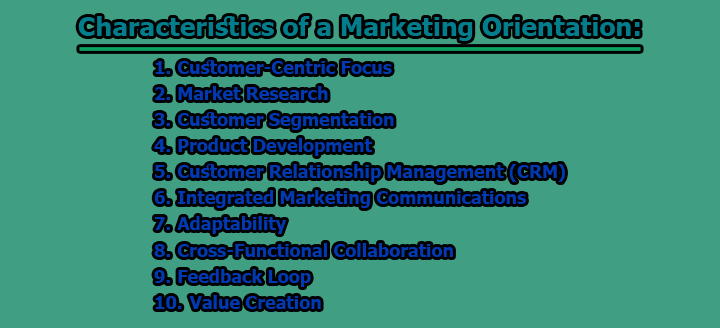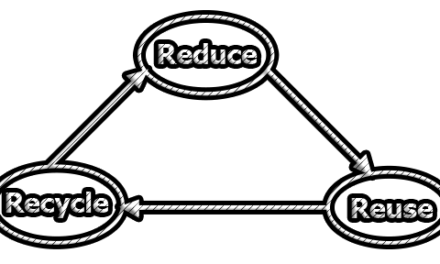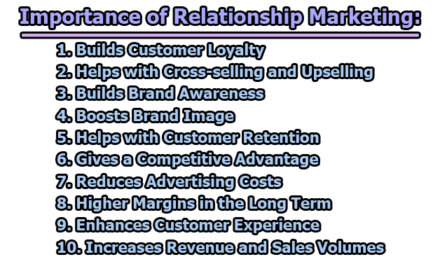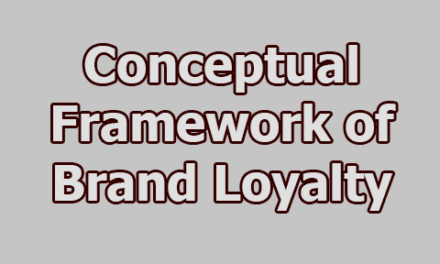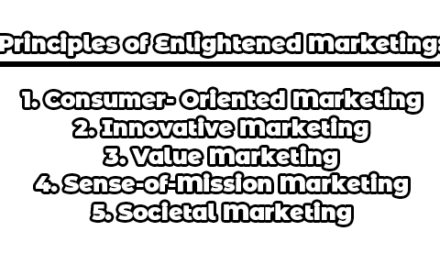Characteristics of a Marketing Orientation and Its Benefits:
A marketing orientation, also known as a market orientation, is a business approach that places a strong emphasis on understanding and meeting the needs and wants of customers. It is a customer-centric philosophy that guides a company’s strategy, decision-making processes, and activities. In this approach, the focus is not solely on producing and selling products or services but on creating value for customers. Here, we will explain the key characteristics of a marketing orientation and its associated benefits.
Characteristics of a Marketing Orientation:
A marketing orientation involves a deep commitment to understanding and meeting customer needs and wants. The following characteristics of a marketing orientation are based on established marketing literature and practices:
1. Customer-Centric Focus: At the heart of a marketing orientation is a strong focus on customers. The organization understands that customer satisfaction and loyalty are essential for long-term success (Kotler & Keller, 2016).
2. Market Research: Continuous market research is a hallmark of a marketing orientation. Companies invest in collecting and analyzing data about customer preferences, market trends, and competitor activities (Armstrong & Kotler, 2015).
3. Customer Segmentation: Companies segment their customer base into distinct groups based on demographics, behavior, or other criteria. This segmentation allows for more targeted marketing efforts (Kotler & Armstrong, 2020).
4. Product Development: Products and services are developed based on customer needs and feedback. This ensures that what is offered aligns with customer expectations (Drucker, 1954).
5. Customer Relationship Management (CRM): CRM systems are used to manage customer data, track interactions, and personalize marketing efforts. Building and maintaining strong customer relationships is a priority (Peppers & Rogers, 2011).
6. Integrated Marketing Communications: Marketing messages and efforts are coordinated across various channels, such as advertising, social media, public relations, and content marketing, to ensure consistency and effectiveness (Duncan & Caywood, 1996).
7. Adaptability: Marketing-oriented companies are agile and responsive to changing market conditions. They are willing to adjust their strategies and offerings based on shifts in customer preferences or market dynamics (Day, 2011).
8. Cross-functional collaboration: Different departments within the organization, including marketing, sales, product development, and customer service, collaborate to ensure alignment with customer-centric goals (Narver & Slater, 1990).
9. Feedback Loop: A continuous feedback loop is established with customers to gather insights for improvement and innovation. Companies actively seek and act on customer feedback (Kotler et al., 2017).
10. Value Creation: The central goal is to create superior value for customers. This value creation is seen as the pathway to profitability and sustainable business growth (Porter, 1996).
Benefits of a Marketing Orientation:
Here are the key benefits of adopting a marketing orientation:
i. Customer Satisfaction: A marketing orientation places a strong emphasis on understanding and meeting customer needs and preferences (Kotler & Keller, 2016). By actively listening to customers and tailoring products and services to their requirements, companies can enhance customer satisfaction significantly (Narver & Slater, 1990).
ii. Competitive Advantage: A key benefit of adopting a marketing orientation is the potential for gaining a sustainable competitive advantage (Porter, 1996). By aligning products and marketing strategies with customer preferences, companies can differentiate themselves from competitors (Day, 2011).
iii. Increased Sales and Revenue: Satisfied customers are more likely to make repeat purchases (Peppers & Rogers, 2011). A marketing-oriented approach leads to higher customer retention rates, driving increased sales and revenue (Armstrong & Kotler, 2015).
iv. Effective Resource Allocation: Marketing research and customer feedback enable companies to allocate resources efficiently (Kotler et al., 2017). This reduces wasteful spending on ineffective marketing strategies and optimizes budget utilization.
v. Innovation: Companies that adopt a marketing orientation tend to be more innovative. They continuously seek customer input and market insights, leading to the development of new and improved products and services (Drucker, 1954).
vi. Long-Term Sustainability: Building strong customer relationships is a central tenet of a marketing orientation (Kotler & Keller, 2016). Sustaining these relationships fosters long-term business sustainability, reducing reliance on short-term gains.
vii. Improved Brand Reputation: Delivering value and consistently meeting customer needs enhances a company’s brand reputation (Armstrong & Kotler, 2015). A positive reputation attracts new customers and partners, further boosting the business (Kotler & Armstrong, 2020).
viii. Market Responsiveness: Marketing-oriented companies are more responsive to changes in the market environment. They can adapt quickly to evolving customer preferences and competitive threats (Day, 2011).
ix. Market Expansion: Understanding diverse customer segments and their unique needs can lead to successful market expansion strategies (Porter, 1996).
x. Employee Morale: Employees in marketing-oriented organizations often have a strong sense of purpose (Narver & Slater, 1990). They see the direct impact of their work on customer satisfaction and company success, which can boost employee morale and engagement.
xi. Customer Loyalty: Satisfied customers are more likely to become loyal advocates who refer friends and family to the company (Peppers & Rogers, 2011). This reduces the cost of customer acquisition and supports long-term profitability.
xii. Better Product-Market Fit: A marketing orientation helps companies ensure that their products or services align closely with market demand, reducing the risk of product failures (Drucker, 1954).
xiii. Reduced Marketing Costs: Targeted marketing efforts are more cost-effective than broad, mass-market campaigns (Kotler & Armstrong, 2020). A marketing orientation can lead to lower marketing expenses over time.
xiv. Market Differentiation: By offering unique and customer-centric products or services, companies can stand out in a crowded marketplace (Porter, 1996).
xv. Data-Driven Decision-Making: A marketing orientation relies on data and customer insights to drive decisions (Armstrong & Kotler, 2015). This reduces reliance on intuition and guesswork, improving the effectiveness of decision-making.
xvi. Global Expansion: Companies with a strong customer focus can expand into international markets more effectively by tailoring their offerings to local customer needs and preferences (Kotler et al., 2017).
xvii. Risk Mitigation: Understanding customer needs and market dynamics helps companies anticipate and mitigate risks (Day, 2011). This reduces the impact of market downturns or unforeseen challenges on the business.
In conclusion, a marketing orientation represents a fundamental shift in a company’s approach toward achieving success by prioritizing customer needs and preferences. The core characteristics of a marketing orientation, including a customer-centric focus, rigorous market research, effective customer segmentation, and integrated communications, serve as a blueprint for businesses to thrive in today’s dynamic marketplace. By embracing these principles, organizations stand to gain a multitude of benefits, such as increased customer satisfaction, competitive advantage, higher sales and revenue, efficient resource allocation, and sustained long-term growth. Ultimately, a marketing orientation not only transforms the way a company operates but also fosters strong customer relationships and enhances its position in the market, making it a vital strategy for businesses seeking sustained success and profitability.
References:
- Armstrong, G., & Kotler, P. (2015). Marketing: An Introduction. Pearson.
- Duncan, T., & Caywood, C. (1996). The concept, process, and evolution of integrated marketing communication. In Proceedings of the 1996 Conference of the American Academy of Advertising (pp. 12-18).
- Drucker, P. F. (1954). The Practice of Management. Harper & Brothers.
- Day, G. S. (2011). Closing the Marketing Capabilities Gap. Journal of Marketing, 75(4), 183-195.
- Kotler, P., & Keller, K. L. (2016). Marketing Management. Pearson.
- Kotler, P., Armstrong, G., & Opresnik, M. O. (2017). Marketing: An Introduction. Pearson.
- Narver, J. C., & Slater, S. F. (1990). The effect of a market orientation on business profitability. Journal of Marketing, 54(4), 20-35.
- Peppers, D., & Rogers, M. (2011). Managing Customer Relationships: A Strategic Framework. John Wiley & Sons.
- Porter, M. E. (1996). What is Strategy? Harvard Business Review, 74(6), 61-78.

Library Lecturer at Nurul Amin Degree College

